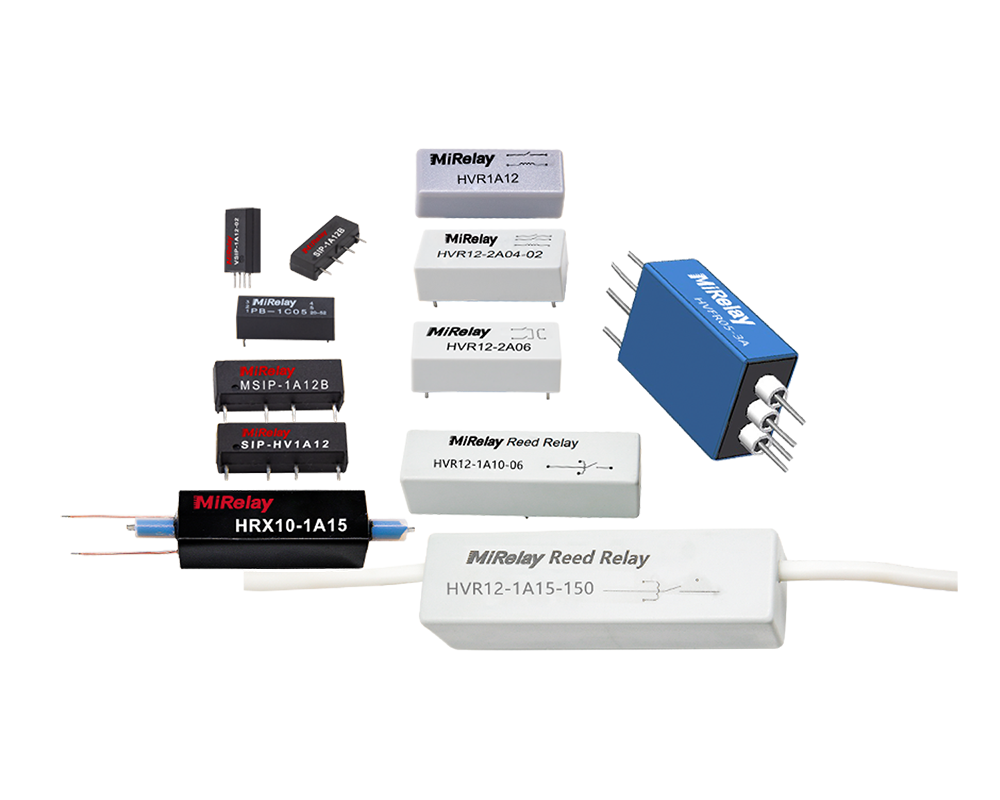Application on Industrial Equipment -- Reed Relay Series
Keyword:
Relay
Electronic components
Classification:
Details
The reed switch, also known as a tongue reed switch or magnetic reed switch, is a hermetically sealed magnetic control mechanical switch invented by Bell Labs in the 1940s. It can be used as a magnetic proximity switch or relay, and is smaller, faster, and has a longer lifespan compared to general mechanical switches. Compared to electronic switches, it also has strong load impact resistance and high operational reliability.
The reed switch exhibits excellent insulation properties. The insulation resistance of this switch can reach up to 10^15Ω, indicating that its leakage current can attain levels of 10^-15A. Such a low leakage level is widely applicable in medical electronic devices, such as probes or cardiac pacemakers that are inserted into the human body, as these devices require no leakage current near the heart; even microamperes or sub-microamperes of current can affect the electrical performance of critical areas of the heart.
Because the contacts of the reed relay are sealed, they can switch low-level signals down to fA (10^-15 amperes) and nV (10^-9 volts), which traditional electromagnetic relays cannot achieve. Similarly, mechanical relays can operate only a few million times at most, as their armature operates on a pivot point that wears out and reduces their lifespan. In contrast, reed relays have no wear parts, allowing them to operate up to a billion times without any issues.
Features of the reed relay:
▪ High lifespan (operates up to a billion times)
▪ Multi-pole structure, up to 5 poles
▪ Form A (normally open)
▪ Form B (normally closed)
▪ Form C (a single-pole double-throw (SPDT) switch, normally closed)
▪ Form D (a single-pole double-throw (SPDT) switch, normally open)
▪ Form E (bidirectional switch)
▪ Low switch resistance (as low as 50 mohm)
▪ High insulation resistance (up to 10^15 ohm)
▪ Can operate up to 10,000 volts
▪ Can carry high current
▪ Can operate and carry signals as low as 10 nV
▪ Can operate and carry signals in the fA range
▪ Can operate and carry signals up to 6 GHz
Operating time is between 100µs and 300µs.
▪ Can operate at ultra-special temperatures, from -55°C to 100°C
▪ Can operate normally in all different environments such as air, water, vacuum, oil, fuel, and dusty environments
▪ Can withstand shocks up to 200Gs
▪ Can withstand vibrations of 50Hz to 200Hz up to 30Gs
▪ Provides a smaller size
▪ Standard lead pins
▪ Various packaging structures
▪ Multiple reed switch options available
▪ Customizable coil resistance
▪ Optional magnetic shielding
Message
If you want to ask questions, we will send experts to contact you within one working day. Please leave your contact information.







